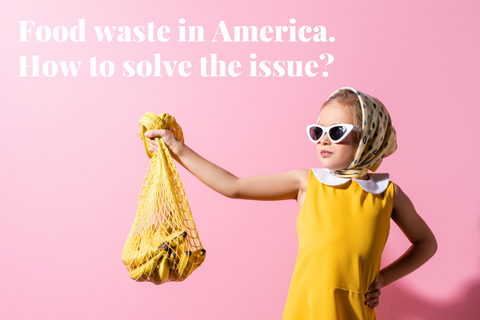In the U.S., is wasted one pound of food per person every day. Nearly 40 percent of the food produced in the United States is lost. The goal is to cut the nation’s food waste by 50 percent by 2030.
Food waste in America is a serious issue
Americans waste a massive amount of food. In the U.S. is wasted one pound of food per person every day. At the same time, 1 in 8 Americans struggles to put food on the table. In 2021, due to the coronavirus pandemic, 42 million Americans may experience hunger. According to the Environmental Protection Agency (EPA), food waste is constantly increasing. In 2018 the U.S. generated 103 million tons of waste. The Food and Agriculture Organization (FAO) says that worldwide we waste one-third of all food produced. It is a shame, considering poverty and starvation in several regions. The U.S. Department of Agriculture identifies several causes: “Food loss occurs for many reasons, with some types of loss—such as spoilage—occurring at every stage of the production and supply chain. Between the farm gate and retail stages, food loss can arise from problems during drying, milling, transporting, or processing that expose food to damage by insects, rodents, birds, molds, and bacteria. At the retail level, equipment malfunction (such as faulty cold storage), over-ordering, and culling of blemished produce can result in food loss. Consumers also contribute to food loss when they buy or cook more than they need and choose to throw out the extras.”
Food waste has grave implications for climate change
“If food waste were a country – writes the New York Times - it would be the third-largest greenhouse gas emitter, according to the United Nations Food and Agriculture Organization. In the United States alone, food waste generates the same amount of greenhouse gas emissions as 37 million cars, according to the Natural Resources Defense Council. That accounts for both the energy used in agriculture to grow unused food, as well as the methane that’s released when the food rots in landfills.”
How to fix the problem
In 2015, the U.S. Environmental Protection Agency (EPA) and the Department of Agriculture (USDA) set a goal to cut food waste by 50 percent by 2030. EPA, the U.S. Environmental Protection Agency, lists the benefits of reducing wasted food:
- Saves money from buying less food.
- Reduces methane emissions from landfills and lowers your carbon footprint.
- Conserves energy and resources, preventing pollution involved in the growing, manufacturing, transporting, and selling food (not to mention hauling the food waste and then landfilling it).
- Supports your community by providing donated untouched food that would have otherwise gone to waste to those who might not have a steady food supply.
Three secrets for not waste: Planning, prepping, and storing
EPA experts believe there are three actions each of us can take to help to waste less food: Planning, prepping, and storing food. For example, we should always make a list with our weekly meals in mind (this is also a good tip to save money). We should avoid buying more than what we expect to use. It is crucial to store fruits and vegetables properly. Another trick is to prepare perishable foods soon after shopping.



